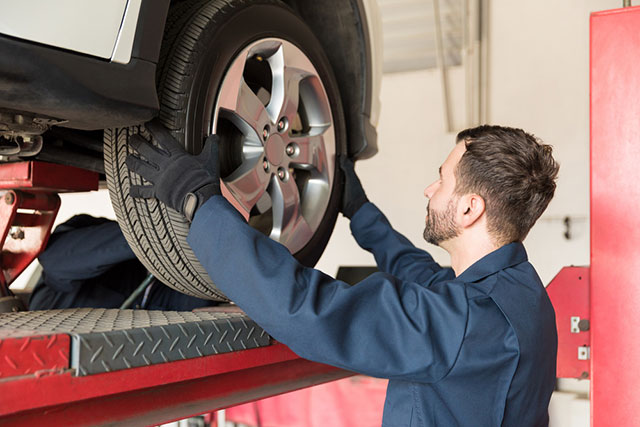Maintaining a vehicle in pristine condition is one of the most important facets of car ownership. Typically, car owners become aware of a problem with their vehicle only when it abruptly stops driving or when a dashboard warning light begins blinking. Unfortunately, there are no dashboard warning indicators for misaligned wheels.
Regular alignment inspections are the only method to determine whether your tires require adjustment. To extend the life of your vehicle, it’s best to educate yourself with the information and tools needed for routine maintenance.
You can also avoid possible issues by using a leveling pad in your parking lot to ensure your car isn’t on uneven ground. If you’re interested in taking the extra step to protect your costly automobile investment, you may check www.reidsupply.com for more information.
This article will discuss at least four things you should know regarding wheel alignment and its effects on tire longevity, fuel efficiency, and driving.
Table of Contents
What Is A Tire Alignment?
Tire alignment is when an automobile’s suspension is mechanically adjusted to correct the tire’s contact direction and angle with the road. The manufacturer determines the best alignment setting for each vehicle model and brand to optimize performance and handling. Regular alignment checks are a crucial part of the preventative solution because of their effects on safety and tire life.
When Do You Need An Alignment For Your Car?
Suspensions are built with some adjustability, as they tend to wear out with time. However, some models are known to have better adjustments as they rarely misalign. Nevertheless, it would be best to visit your local mechanic for alignment check-ups.
You’d be surprised how many factors, such as rough roads, hidden potholes, and steep speed bumps, can easily ruin your car’s tire alignment. Having your wheels immediately checked is necessary if you notice that you’re swerving or your steering wheel shakes while driving at any speed.
Another helpful indicator would be to visit your mechanic every 6,000 miles to ensure that every car part, especially your tire alignment and condition, is safe for use. You can check your manufacturer’s website and manual for a more detailed answer.
Why Would You Need An Alignment?
Alignment checkups have several advantages, whether it’s through routine maintenance or prompted by a driver’s observation when driving. Always ensure your vehicle is in top condition, especially if you use it daily. Here are some reasons why you need a wheel alignment:
- Tire Longevity And Fuel Efficiency: Wheel alignment significantly affects your vehicle’s fuel economy. Wheels that are correctly aligned help distribute power and torque consistently when driving. This results in efficient power delivery and, consequently, reduced fuel consumption.
- Safety: It’s the most crucial reason why you should consider regular wheel alignment checkups. Prevention is always better than cure, and being prepared can save money and, most importantly, lives.
- Preventing Further Damage: Poorly aligned wheels may damage various vehicle components beyond the tires. Other components include brakes, suspension, transmission, and drivetrain. When things aren’t correctly aligned, every car part needs to work harder, speeding up wear and tear and increasing the likelihood of costly automobile repairs.
Your vehicle’s health and your safety on the road depend on these considerations.
How Can You Prevent The Need For Early Alignments?
Numerous causes can throw your car’s wheels out of alignment. Unexpected jolts or substantial impacts can cause components to flex or shift out of place. Common causes include sudden slams on hidden potholes, curbs, and even minor collisions. Hence, always inspect your tires whenever you go in or out of your car; it may help you avoid additional damage.
Normal wear and tear will eventually cause your vehicle’s alignment to become off. As shocks, suspension springs, and other components age, they deteriorate and develop gaps. Hence, this results in poor steering, decreased control, and a change in wheel alignment. However, regular maintenance can prevent this cause of improper alignment.
Additionally, changing the ride height without adjusting the suspension can easily throw off the alignment. Altering the ride height pulls the suspension out of its normal operating range, which increases the likelihood of alignment issues.
Takeaway
Wheel misalignment is more than a minor inconvenience that makes driving difficult and aggravating. It can pose a significant safety risk, especially in heavy traffic when your car isn’t entirely under control. Due to poor steering, you may not be able to escape a collision, or you may be the cause of a crash if your vehicle drifts out of its lane.
Tires that are worn and irregularly damaged can cause blowouts and perform poorly in icy, snowy, or wet conditions. Wheel alignment is a minor investment in driving safety. Make wheel alignment a frequent component of your monthly maintenance for peace of mind.














